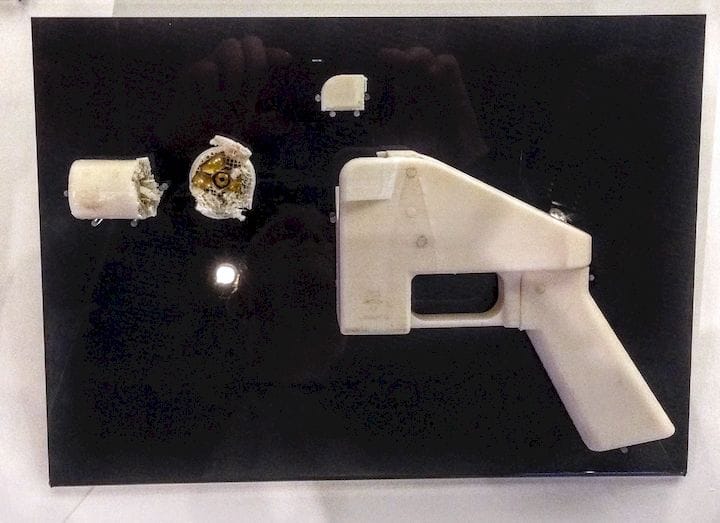![Actual (fired) 3D printed pistol [Source: Fabbaloo]](https://fabbaloo.com/wp-content/uploads/2020/05/image-asset_img_5eb0a48355d23.jpg)
A report in Popular Mechanics describes research to identify the specific 3D printer used to print a given object.
This has been an issue ever since the origination of 3D printers, as they were never designed to somehow “tag” each print with a watermark or similar tracking mechanism. Being able to trace the origin of a specific print could be quite useful in several scenarios.
One scenario would be to identify the root cause of a mechanical failure. If, say, a vehicle containing 3D prints failed somehow, it would be of interest to know the exact machine that produced the parts. That machine and its operational processes could then be inspected to identify any shortcomings for improvement.
Another scenario prominently mentioned in the Popular Mechanics article could be the ability to trace 3D printed firearms. There are those who keep promoting the fear of an avalanche of untraceable, undetectable weaponry, but this is simply not the case, as we’ve discussed countless times previously. At present 3D printed weapons are more expensive and far less functional than conventional weapons, offer no significant detection elimination because metal bullets and gunpowder are still used, and they often will blow up and hurt the operator. Finally, better homemade weapons – that actually work – can already be made with commonly available metal CNC mills in any reasonably sized city.
That said, research has been done to develop solutions to this non-problem. One involved attempting to use the “photocopier” approach, where certain designs would be prevented from being printed. We didn’t think much of that idea.
Now there’s another proposal and this one is perhaps stranger and even less practical. The idea is that each 3D printer – at least those utilizing a nozzle to extrude softened thermoplastic – exhibit a noticeable pattern on the extrusions, ironically, in much the same way as a ballistics analysis of a bullet and rifle are done.
The report says:
“Each layer of a 3D-printed object contains tiny wrinkles — usually measured in submillimeters — called in-fill patterns. These patterns are supposed to be uniform. However, the printer’s model type, filament, nozzle size and other factors cause slight imperfections in the patterns. The result is an object that does not match its design plan.”
Does it work? They go on:
“For the study, a research team printed 5 door keys from 14 separate 3D-printers. The team took photos of each key, then digitally enhanced them to see deep into the filament pattern. The images were sorted through an algorithm, meant to specify their variations and match them to a printer.
Researchers had a 99.8 percent success rate matching the keys to their respective printers. The results stayed the same when the team tested the model again ten months later.”
While this experiment proves this is possible, I find this an unlikely approach for any practical use. As the approach appears to be highly dependent on the 3D printer’s nozzle, you must know what could happen to the nozzle over time.
The nozzle is a component of a 3D printer that undergoes significant change:
-
During maintenance it is tightened, changing its orientation
-
When fixing pathologically bad print jams, it is removed and cleaned in nasty chemicals or even subjected to severe heat treatment (I’ve used a blowtorch on more than one occasion to remove stubborn debris)
-
Nozzles are more frequently swappable, and many people have “sets” of nozzles they install and deinstall as required
-
Nozzles, particularly those made from brass, the most common nozzle material, wear away very quickly if printing with many composite filaments, completely altering the nozzle’s pattern
Thus I feel this approach could work only in very limited circumstances. Even worse, someone wishing to conceal the source of a print need only print a few steel or carbon fiber objects to mess up the nozzle.
This problem is not yet solved.











A research thesis details the incredibly complex world of volumetric 3D printing. We review the highlights.